Bed and Breakfast Software: Essential Features & Selection Guide
Oct 19, 2025
 Mika Takahashi
Mika TakahashiPopular Categories
Hotel Technology & InnovationHotel Operations OptimizationDigital MarketingIndustry TrendsRevenue ManagementHospitality Industry
Popular Categories
Trending Post
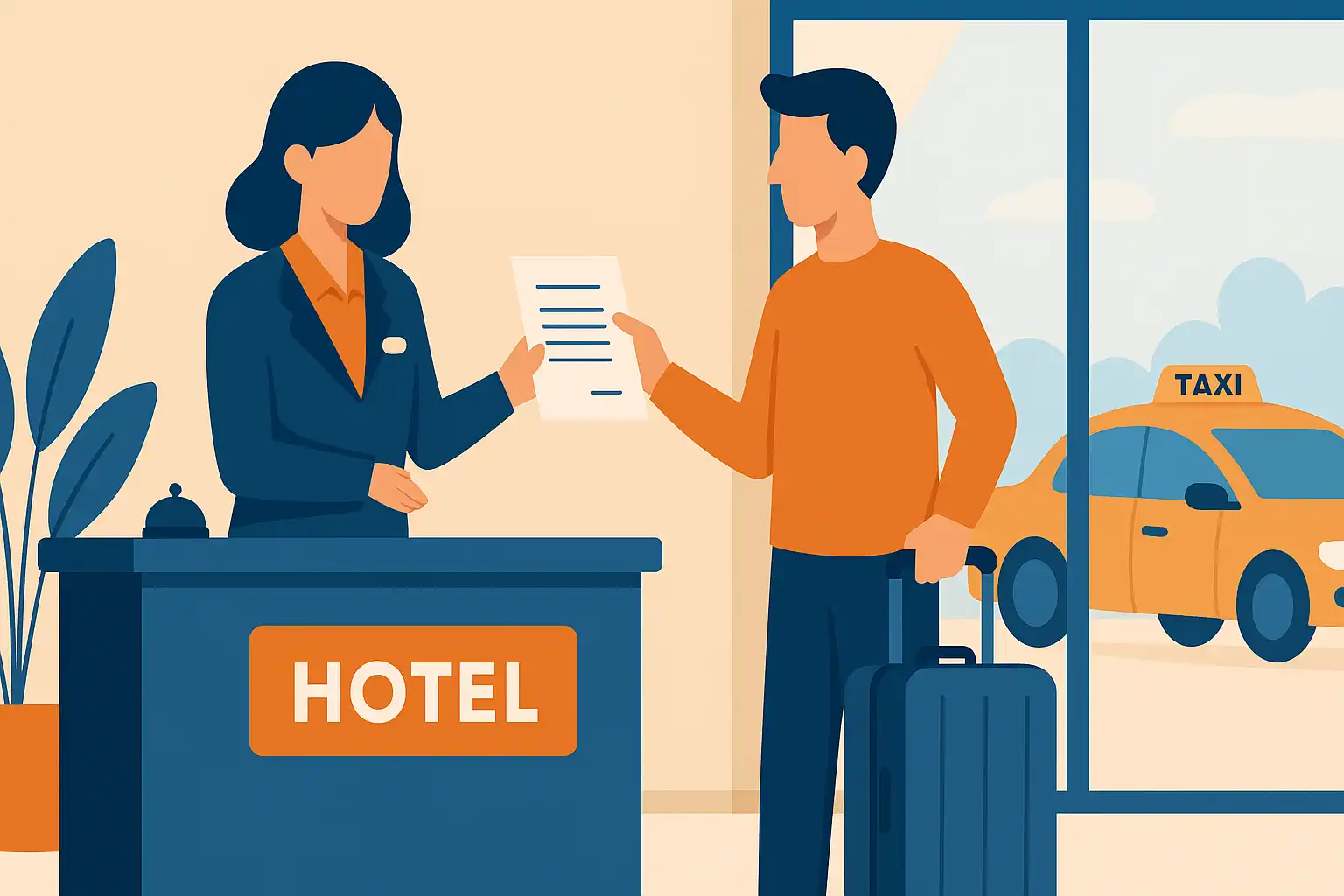
Hotel Walk Letter Template: Professional Guest Communication
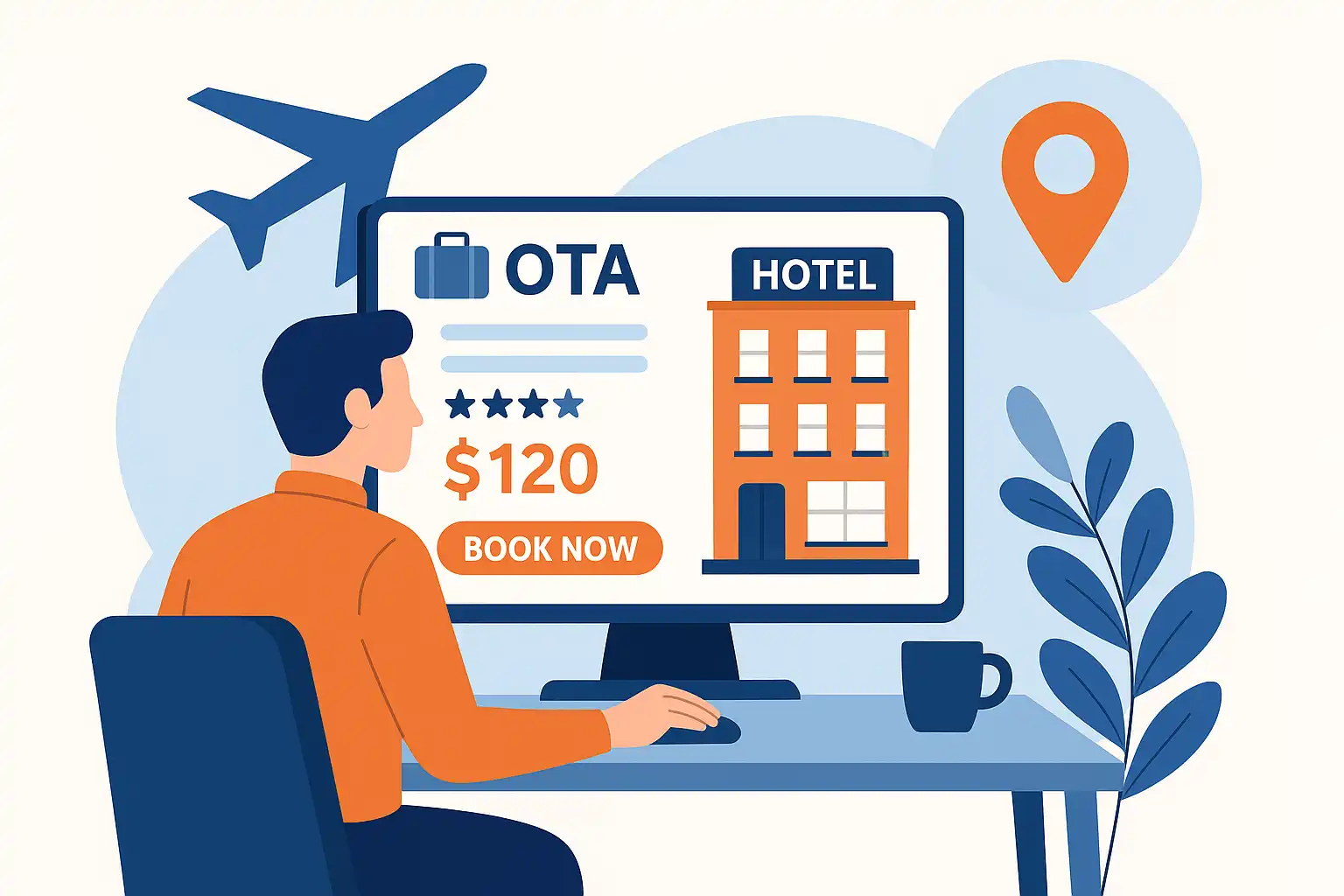
Online Travel Agents: What They Are and How They Work
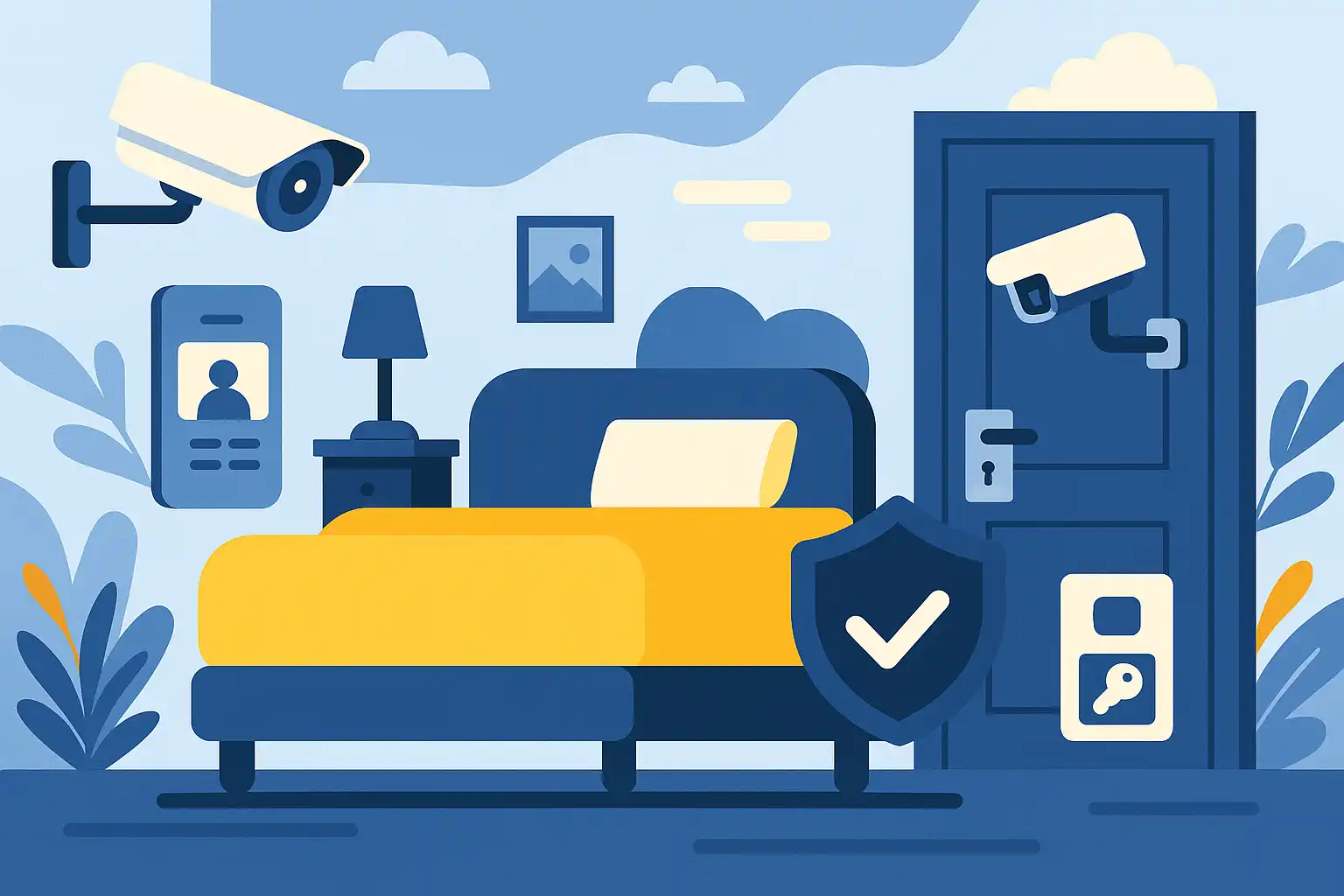
Hotel Security Systems: Modern Protection Solutions

Hotel Advertising: Complete Guide to Boost Bookings and Revenue
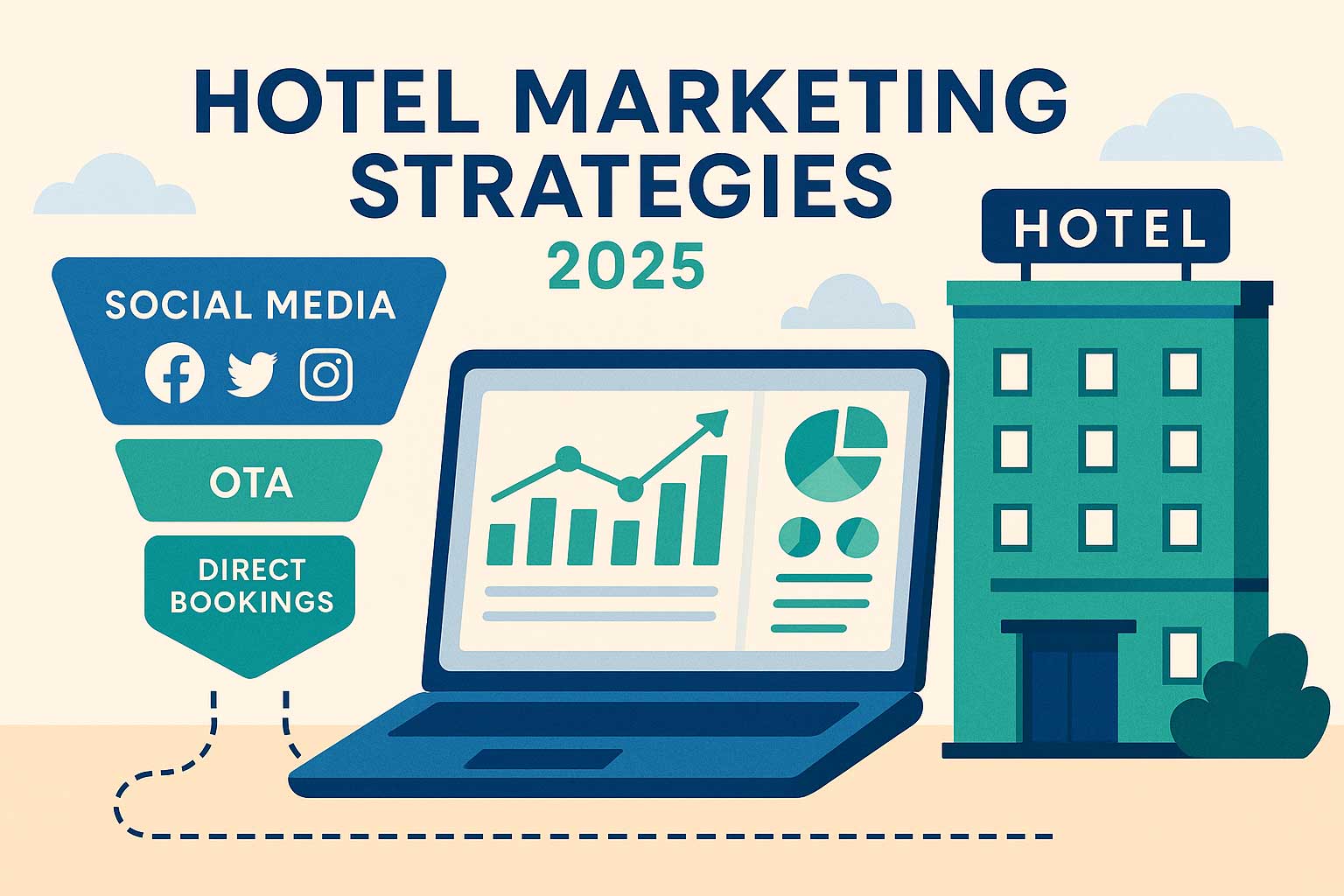
25 Hotel Marketing Strategy Ideas for 2025: Complete Guide

AI Reservation Agent: Revolutionizing Hotel Booking and Guest Experience

PMS Communication: Streamlining Property Management Through Effective Guest Messaging
Table of contents
In today’s fast-paced hospitality world, having the right bed and breakfast software can truly change the game. It can take your property from being overwhelmed with manual tasks to delivering smooth, hassle-free guest experiences—backed by world-class support. Savvy hospitality professionals understand that juggling reservations, tracking housekeeping, and handling payments by hand isn’t just time-consuming—it can also cause costly mishaps like double bookings.
Recent industry insights reveal that B&B owners using integrated bed and breakfast software see 85% fewer booking conflicts and admin errors. Plus, properties with direct booking engines often enjoy a 10-30% revenue boost compared to those relying solely on third-party platforms. Best of all, automation can save owners 1 to 3 hours a day on tasks that used to eat up valuable time—time better spent making your guests feel welcome.
This guide explores the must-have technical features every bed and breakfast software should offer. We’ll also cover key points to keep in mind when choosing software B&B for your property. Whether you run a cozy inn or manage multiple B&Bs, knowing these essentials will help you pick a solution that supports your operations and drives more direct bookings.
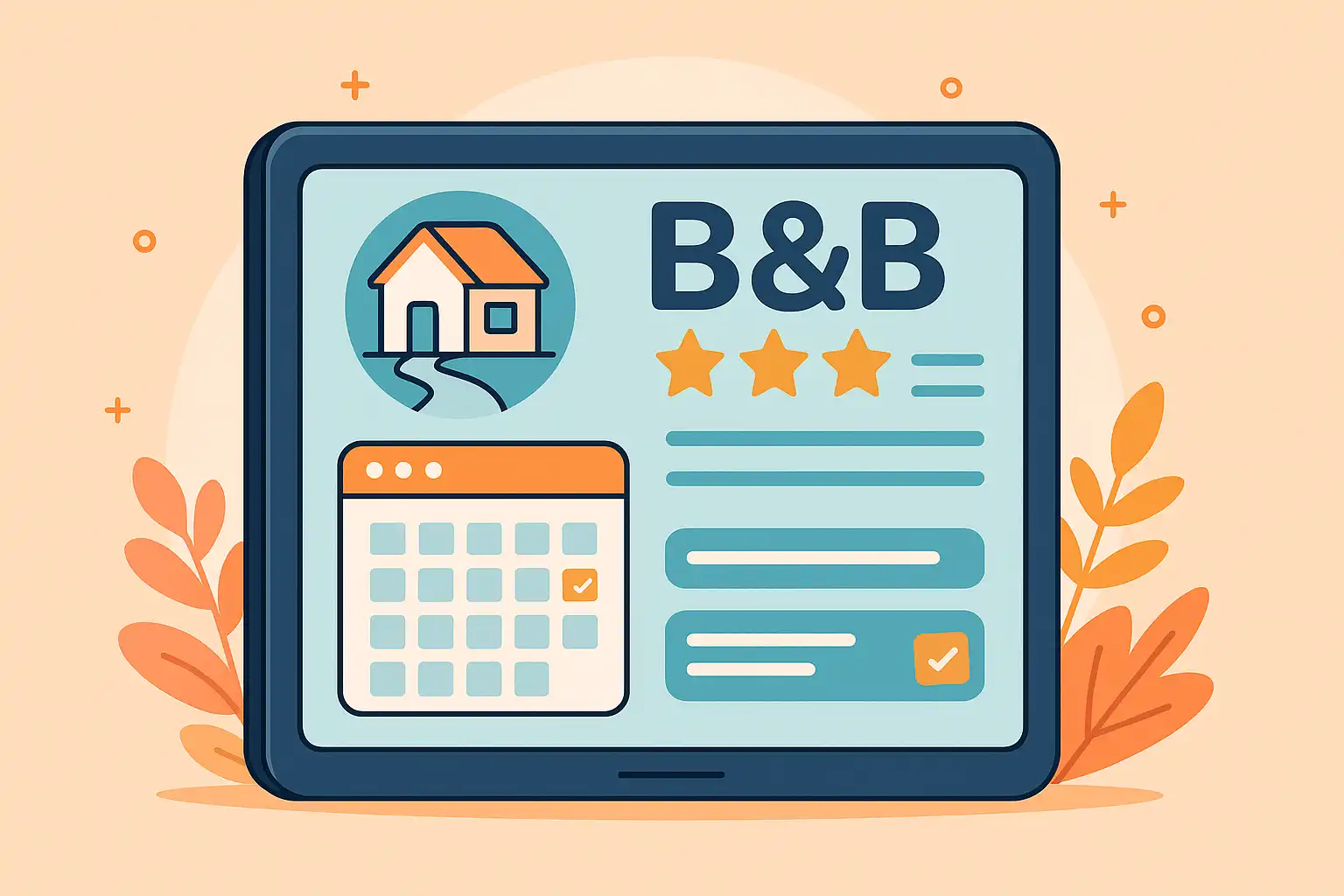
What is Bed and Breakfast Software and Core Functionality
Bed and breakfast software is basically a property management system (PMS) designed specifically for smaller lodging businesses. Unlike generic hotel software, bed and breakfast software is tailored to meet the unique needs of B&Bs—where desk staff is limited and personalized guest interaction is vital. It brings all your important business tasks into one easy-to-use platform accessible anytime, anywhere with one scope to boost direct bookings.
At its core, this bed and breakfast software revolves around three main modules working seamlessly together. The reservation system handles everything from initial booking inquiries to guest arrivals and departures. The front desk manages check-ins, guest communication, and payment processing. Meanwhile, housekeeping management keeps track of cleaning schedules, maintenance, and room availability updates.
Most modern bed and breakfast software is cloud-based, so there’s no need for clunky on-site servers. You get instant access through your web browser or mobile apps, plus automatic backups and updates. Your team can manage operations from anywhere with an internet connection, making life easier and more flexible.
Real-time syncing is a lifesaver. When a guest books a room, the booking software updates instantly across all your booking channels. Housekeeping updates a room’s status, and the front desk sees it immediately. This integration helps prevent double bookings and communication slip-ups that can happen when using separate systems or manual methods.
Choosing between cloud-based or on-premise bed and breakfast software depends on your property’s tech setup and data security needs. Cloud solutions usually require a solid internet connection (at least 25 Mbps) but offer easy scalability and zero maintenance hassle. On-premise gives you full control over your data but demands IT resources and hardware investments that many small B&Bs find impractical.
Essential Technical Features Every B&B Software Must Include
Reservation and Booking Management System
A reliable reservation system is the backbone of any effective bed and breakfast software. It needs to handle the unique demands of small properties where each room might have different features, seasonal rates, or special guest requests. Look for a system with a visual calendar and drag-and-drop functionality so your desk staff can easily shuffle bookings and adjust room assignments with just a few clicks.
Managing multiple room types is essential. Whether you have cozy standard rooms, luxurious suites, or themed accommodations, your bed and breakfast software should handle different pricing tiers for weekends, holidays, and peak seasons. Advanced systems also automate confirmations and cancellations, sending the right messages to guests without you lifting a finger.
One of the most important features? A booking engine that integrates directly with your own website. This lets guests book straight from your site, helping you avoid commission fees from third-party platforms and giving you full control over the guest experience. The engine should support secure payments, real-time availability checks, and instant booking confirmations—just like the big booking sites.
Channel Manager and Distribution Technology
Getting your rooms in front of as many potential guests as possible means managing multiple booking channels. A good channel manager connects your property to hundreds of platforms like Booking.com, Airbnb, and Expedia through real-time API integrations. This means rates and availability update automatically across all sites, so you never have to worry about double bookings.
Smart inventory allocation algorithms make sure your rooms aren’t accidentally sold twice. When someone books on one platform, your availability instantly adjusts everywhere else. Rate parity monitoring keeps your prices consistent across channels, helping you stay competitive without risking OTA penalties. Plus, dynamic pricing features let you adjust rates based on demand and seasonality, pushing those updates out automatically.
Many modern channel managers also hook into Google Hotel Ads, putting your property front and center when travelers search on Google. This extra visibility drives more traffic to your website and helps you score more direct bookings.
Payment Processing and Financial Management
Secure payment processing is a must-have. Your bed and breakfast software should be PCI DSS compliant and work with trusted payment gateways to accept credit cards, bank transfers, and digital wallets like PayPal and Apple Pay. Offering multiple payment options makes it easier for guests worldwide to pay you.
Automated invoicing and receipt generation save you time and keep things professional. You can customize templates to include your branding, check-in instructions, or local tips. Invoices should be sent automatically once a booking is confirmed, and receipts right after payment.
Integrations with accounting tools like QuickBooks, Xero, or Sage help you keep your finances in order without manual data entry. Your transactions get categorized properly, making tax time and financial tracking a breeze.
Look for features that let you handle deposits, partial payments, refunds, and split billing for groups. Detailed payment tracking helps you keep an eye on outstanding balances and follow up when needed.
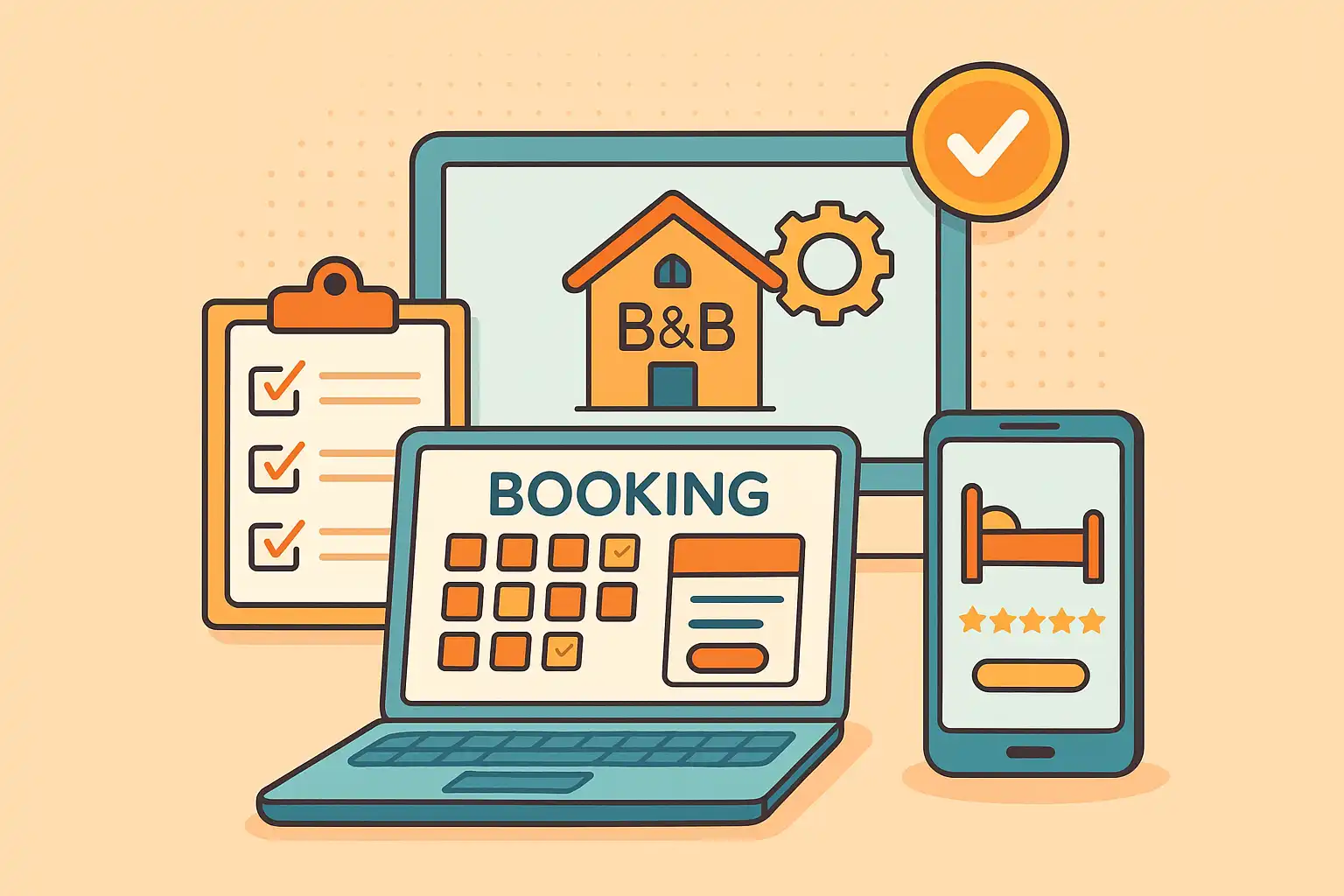
Advanced Technical Integration Capabilities
Guest Communication and CRM Systems
Communication is key to a great guest experience—and automation makes it easier. Your bed and breakfast software should enable personalized emails and SMS messages with customizable templates for confirmations, check-in reminders, pre-arrival info, and post-stay thank-yous. Schedule messages to go out at just the right times and tailor content to each guest’s preferences.
A solid CRM keeps track of guest profiles, booking history, special requests, and preferences. This info helps your team provide personalized touches that guests remember and appreciate, boosting repeat bookings. The system should also track satisfaction scores, dietary needs, and special occasions.
Integrations with review platforms like TripAdvisor, Google, and Facebook automate review requests and alert you to new feedback. Prompt responses show guests you care and help build your online reputation, which is vital for attracting more bookings.
Multi-language support is a plus, especially if you welcome international travelers. Automated translations for common messages make communication smoother, while letting you customize important messages for accuracy and cultural sensitivity.
Operational Management Tools
Keeping housekeeping efficient is easier with mobile task management apps that sync in real time. Housekeeping staff can update room status, view cleaning schedules, and report maintenance needs on the go. This way, the front desk always has the latest info on room availability.
Maintenance scheduling and work order tracking prevent small issues from becoming big problems. Your team can log repairs, track progress, and plan preventive maintenance during vacant periods so guests aren’t disturbed.
Staff scheduling tools with role-based permissions help optimize labor costs and ensure the right coverage during busy times. The system should account for skill levels, certifications, and availability while giving managers insight into productivity.
Inventory management for amenities and supplies helps control costs and maintain a consistent guest experience. Automated reorder alerts and usage reports support smart purchasing decisions and budgeting.
Critical Selection Criteria for B&B Owners
Technical Infrastructure Requirements
To run smoothly, your bed and breakfast software needs a solid technical foundation. Cloud-based systems usually require at least 25 Mbps internet speed for fast, responsive performance. Slower connections can cause frustrating delays during busy booking times.
Make sure the software works well across popular browsers like Chrome, Firefox, Safari, and Edge, and on all devices—desktops, tablets, and smartphones. This flexibility is important if your staff use personal devices or work from different locations.
Mobile-friendly design and native apps for iOS and Android let you manage your property anytime, anywhere—whether you’re at the front desk or on the go.
Reliable data backup and disaster recovery are essential. Look for providers offering 99.9% uptime guarantees and automatic multiple daily backups stored securely to protect your data.
Scalability and Performance Metrics
If you plan to grow, choose bed and breakfast software that can scale with you. Check the maximum number of rooms and properties the system supports, and whether it can handle multiple users without extra fees.
Performance matters, especially during peak booking periods. The system should stay fast and responsive even when many guests are booking simultaneously. Features like load balancing help maintain smooth operation.
Your software should also handle seasonal booking spikes without slowing down, especially if your property is in a busy tourist area.
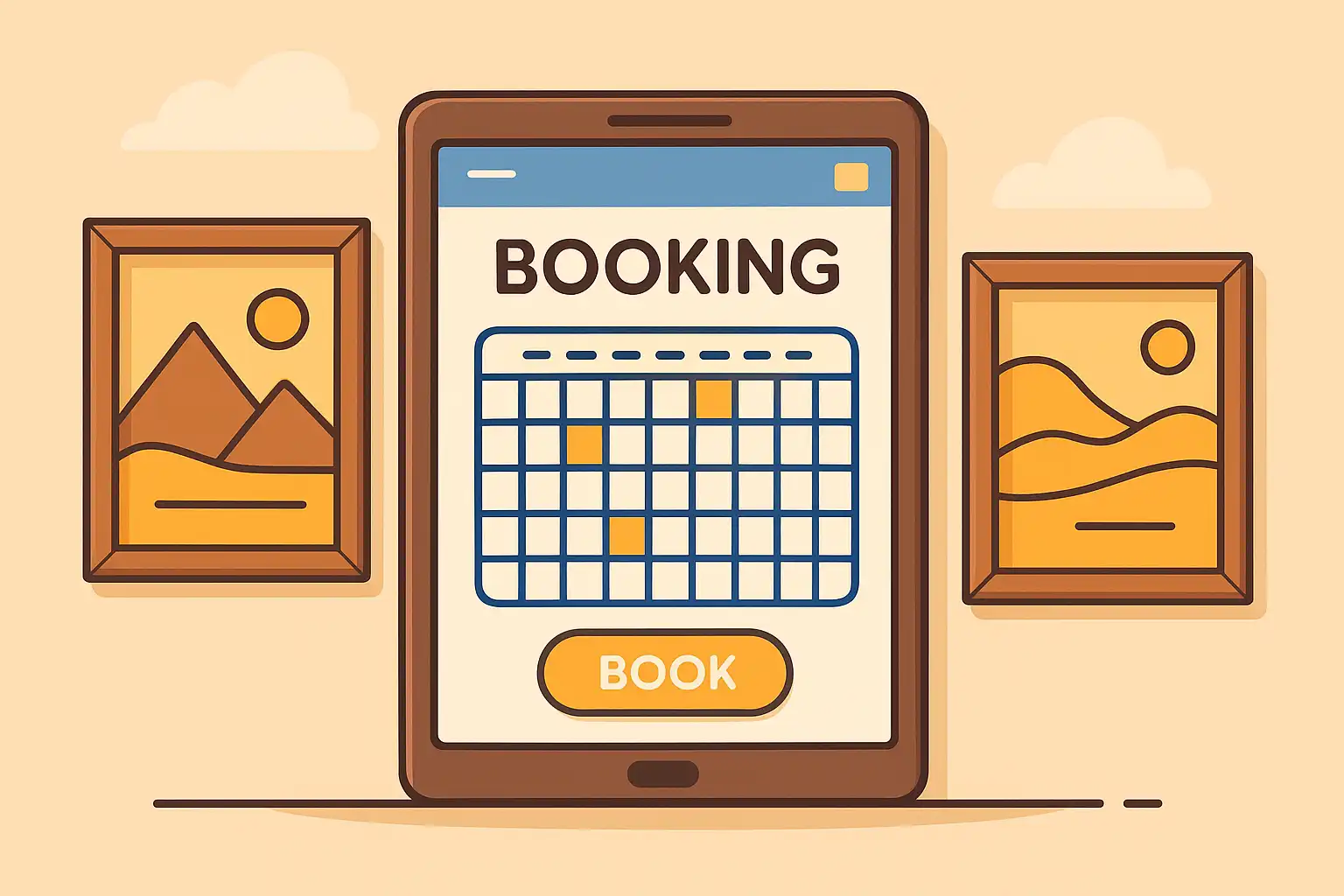
Security and Compliance Standards
Data security is more important than ever. PCI DSS Level 1 compliance is the gold standard for protecting guest payment info, requiring regular security checks and strict data handling.
If you serve European guests, GDPR compliance is a must. Your bed and breakfast software should manage guest consent, data portability, and deletion requests. Even if you’re outside Europe, GDPR applies if you process data from European travelers.
SSL encryption (TLS 1.2 or higher) secures data transmission between devices and servers, protecting sensitive info during everyday use.
Two-factor authentication and role-based access controls add extra layers of security, especially important if you have seasonal staff with varying access needs.
Look for vendors who perform regular security audits and penetration tests, and who are transparent about their security practices and incident responses.
Reporting and Analytics Capabilities
Good reporting turns data into insights that help you make smart decisions. Real-time dashboards should show key metrics like occupancy, average daily rate (ADR), and revenue per available room (RevPAR). These help you track performance and spot trends quickly.
Customizable financial reports with export options (PDF, Excel, CSV) let you analyze data and integrate with your accounting tools. Automated report scheduling means stakeholders get timely updates without extra work.
Analytics on guest behavior and booking sources help you focus marketing efforts where they pay off most. Understanding which channels bring in the best bookings lets you optimize your strategy.
Advanced analytics can also offer revenue management insights, comparing your results to local market trends and seasonal patterns. This helps you price rooms right and manage capacity to maximize revenue year-round.
Implementation and Support Considerations
Onboarding and Training Requirements
Getting your bed and breakfast software up and running smoothly takes planning and training. Data migration usually takes 2-4 weeks, depending on how much info you have to move and how complex it is. Your provider should guide you through this carefully to ensure accuracy.
Staff training is key. Look for providers offering certifications, video tutorials, live webinars, and hands-on workshops to suit different learning styles and schedules.
Customization options let you tailor workflows and branding so your software fits your property’s personality. You should be able to edit email templates, invoices, and booking confirmations easily.
Testing environments where your team can practice without affecting live data help reduce mistakes when you go live.
Ongoing Support and Maintenance
Reliable support can make or break your experience. Choose providers with 24/7 support and guaranteed response times, especially if you operate across time zones.
Regular software updates show the vendor is actively improving the product and keeping it secure. Monthly updates are a good sign of responsiveness, while quarterly updates may mean a steadier pace.
Good documentation—video tutorials, knowledge bases, searchable content—helps your team solve common issues on their own, reducing support requests.
Community forums and user groups provide valuable peer support and tips beyond official help channels.
Cost Structure and Contract Terms
Understanding the full cost picture is important. Monthly fees usually run $3-15 per room, depending on features and support. Some vendors charge a percentage of revenue, which can get pricey as you grow.
Setup fees, training, and data migration are often extra costs to plan for. Some providers waive these for annual contracts or include training in the price.
Look closely at contract terms—cancellation policies and data portability rights affect your flexibility to switch systems if needed. Make sure you can export your data easily.
Premium features, integrations, and enhanced support can add to your costs over time. Decide what you need now versus what you might add later as your business grows.
Remember, the right bed and breakfast software isn’t just a monthly expense—it’s an investment that can save you money through efficiency, boost revenue with more direct bookings, and improve guest satisfaction.
Choosing the right bed and breakfast software is a strategic decision that can transform your operations and help your property thrive. Take your time, request demos, talk to current users, and test features thoroughly before making your choice. The software you pick will shape your daily work and guest experience for years to come.
